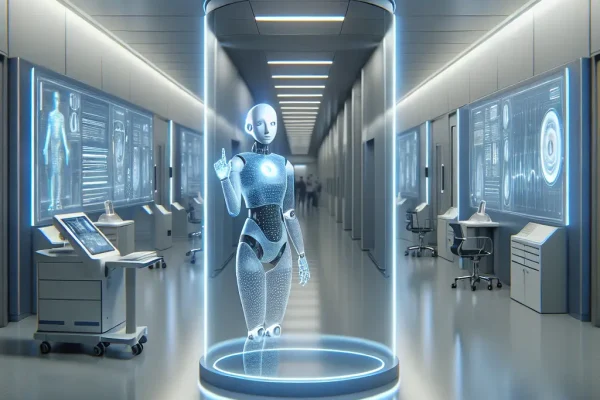Imagine having a real-time conversion with anyone in the world — instantly, in their own language, with your own voice. OpenAI’s Voice Engine, unveiled in early 2025, does exactly that. But while this hyper-realistic AI-powered translation tool promises to break language barriers for good, it also opens a Pandora’s box of new risks: deepfake fraud, voice identity theft, and a shakeup of global communication as we know it. Is the world ready for anyone’s voice to be just a prompt away?
The Problem / What’s Happening: OpenAI Voice Engine & Real-Time AI Translation for Calls
The dream of instant global conversation has haunted technologists for decades, but until now, live translation fell short — robotic, delayed, or stripped of authenticity. Now, OpenAI’s Voice Engine enters the field, offering real-time AI translation for calls and live chats with voice cloning so realistic it’s often indistinguishable from a person’s true sound. According to MIT Technology Review, this tech has been demoed translating live speech into over 40 languages, replicating accents, intonation, and even emotional delivery — all in milliseconds.
- Ultra-fast: Latency of less than 300ms per word, making it viable for true conversations (Wired).
- Hyper-realistic cloning: Your voice, accent, and emotion are preserved, only the language changes.
- Plug-and-play: Works with any call or live conferencing app via simple API integration.
Why is this trending now? Because OpenAI’s system is the first to blend unprecedented fidelity and speed — outclassing even established tools like Google Translate, which still relies mostly on text and robotic-sounding voice output.
How Does OpenAI Voice Engine Work?
OpenAI leverages advanced deep learning for instant acoustic modeling, using a few seconds of reference audio to clone a user’s voice and mimic their speaking style. As the user speaks in one language, the system instantly transcribes, translates, and regenerates the phrase in the target language — in the same unique timbre, pacing, and inflection. According to Nature, the engine utilizes cutting-edge generative neural nets and a custom-built dataset of multilingual dialogues, paired with voice cloning technology previously only seen in deepfake video production.
Why It Matters: Human and Emotional Impact
The implications border on science fiction. From medical consults across continents, international business deals, to connecting refugees with loved ones, the future of multilingual communication with AI could become truly frictionless. For over a billion people who struggle with language barriers daily, OpenAI’s tool promises new social, economic, and educational opportunities:
- Healthcare: Doctors can instruct patients in crisis zones in real time — even if they’ve never spoken that language (Nature).
- Work & Commerce: Global teams collaborate more deeply, and small businesses expand abroad overnight.
- Personal Connections: Grandparents can read bedtime stories to grandkids oceans away — accent, warmth, and all — even if they don’t share a language.
But new risks come in tow: the hyper-realistic nature of cloned voices makes “spear-phishing” and imposter scams much harder to detect. As Wired warns, identity theft and misuse are no longer a distant danger — they’re here.
Expert Insights & Data: Tech, Ethics, and the Deepfake Dilemma
Leading AI experts stress that with power this vast, oversight is essential. Dr. Emily Chen, a computational linguist at MIT, told MIT Technology Review, “This is the closest humanity has come to the Babel Fish. It’s thrilling — but it must not be weaponized.”
- Market Potential: The real-time AI translation market is projected to exceed $15 billion annually by 2027 (Gartner, via Wired).
- Security Risks: 72% of CISOs polled by TechCrunch said “advanced voice cloning” was their top emerging security threat for 2025 (TechCrunch).
- Voice Consent: OpenAI has pledged to require explicit voice and data consent for all users, but critics argue technical safeguards may still be circumvented (MIT Tech Review).
Ethics of AI-Powered Language Translation
The big question: Can AI voice cloning be misused? Leading ethicists warn that, with only a few seconds of audio sample, malicious actors could impersonate voices for scams, blackmail, or political misinformation. OpenAI has introduced a watermarking system and real-time authentication, but as with all AI, the arms race between security and misuse intensifies.
Future Outlook: One Year to a New World?
Experts at Wired predict that by 2027, over 400 million people will use instant voice translation apps powered by AI for work, travel, and daily life. Lawmakers worldwide are already drafting regulations to address privacy, consent, and the ethics of digital voice ownership. OpenAI and Google are in a heated technical race, spurring rapid innovation and inevitable growing pains.
- Opportunities: Universal language access, economic boost for emerging markets, truly global teams.
- Risks: Deepfake abuse, digital identity theft at scale, erosion of linguistic diversity.
- Prediction: Voice translation becomes standard in smartphones and conferencing platforms within five years.
Case Study / Comparison: OpenAI Voice Engine vs Google Translate
The battle for AI-powered language supremacy is officially on. Here’s how OpenAI Voice Engine stacks up against legacy platforms like Google Translate:
| Feature | OpenAI Voice Engine | Google Translate |
|---|---|---|
| Translation latency | < 300ms (real-time) | Up to 5s |
| Voice cloning realism | Hyper-realistic, emotion preserved | Robotic, generic |
| Supported languages | 40+ (rapidly growing) | 100+ (text), 30+ (speech) |
| Security/consent features | Mandatory authentication, watermarking | Basic |
| Integration | API for real-time calls/chat | Web/mobile app |
Chart/Infographic Idea: “Growth in Real-Time AI Voice Translation Users (2024–2027)” — Show adoption curves for OpenAI Voice Engine, Google Translate, Meta, and Apple.
Related Links
- [External: MIT Technology Review: OpenAI’s Voice Engine Demo]
- [External: Nature: AI-powered speech tools]
- [External: Wall Street Journal: AI and Instant Translation]
FAQ: OpenAI Voice Engine & Real-Time AI Translation
1. How does OpenAI Voice Engine work?
It uses neural voice cloning and instant translation, preserving the speaker’s voice and emotion in another language in real time.
2. What makes OpenAI Voice Engine different from Google Translate?
OpenAI’s tool offers real-time, highly realistic voice cloning and accent preservation, while Google Translate’s voice is still robotic and delayed.
3. Can AI voice cloning be misused?
Yes. The possibility of voice phishing, deepfake fraud, and identity theft is very real if safeguards or consent systems are circumvented.
4. Will real-time AI translation for calls become standard soon?
Industry analysts expect instant voice translation apps to become ubiquitous on smartphones and work platforms by 2027.
5. What are the key ethical concerns of AI-powered language translation?
Major concerns include privacy, consent, potential for impersonation crimes, algorithmic bias, and the loss of linguistic diversity.
Conclusion
OpenAI’s Voice Engine signals a watershed moment in global communication — tearing down language barriers, but exposing society to profound risks over deepfake misuse and identity theft. While the benefits could be world-altering for business, healthcare, and human connection, we must move as swiftly on safeguards as on innovation. The age of voice without borders is here — but with great power comes great responsibility.


